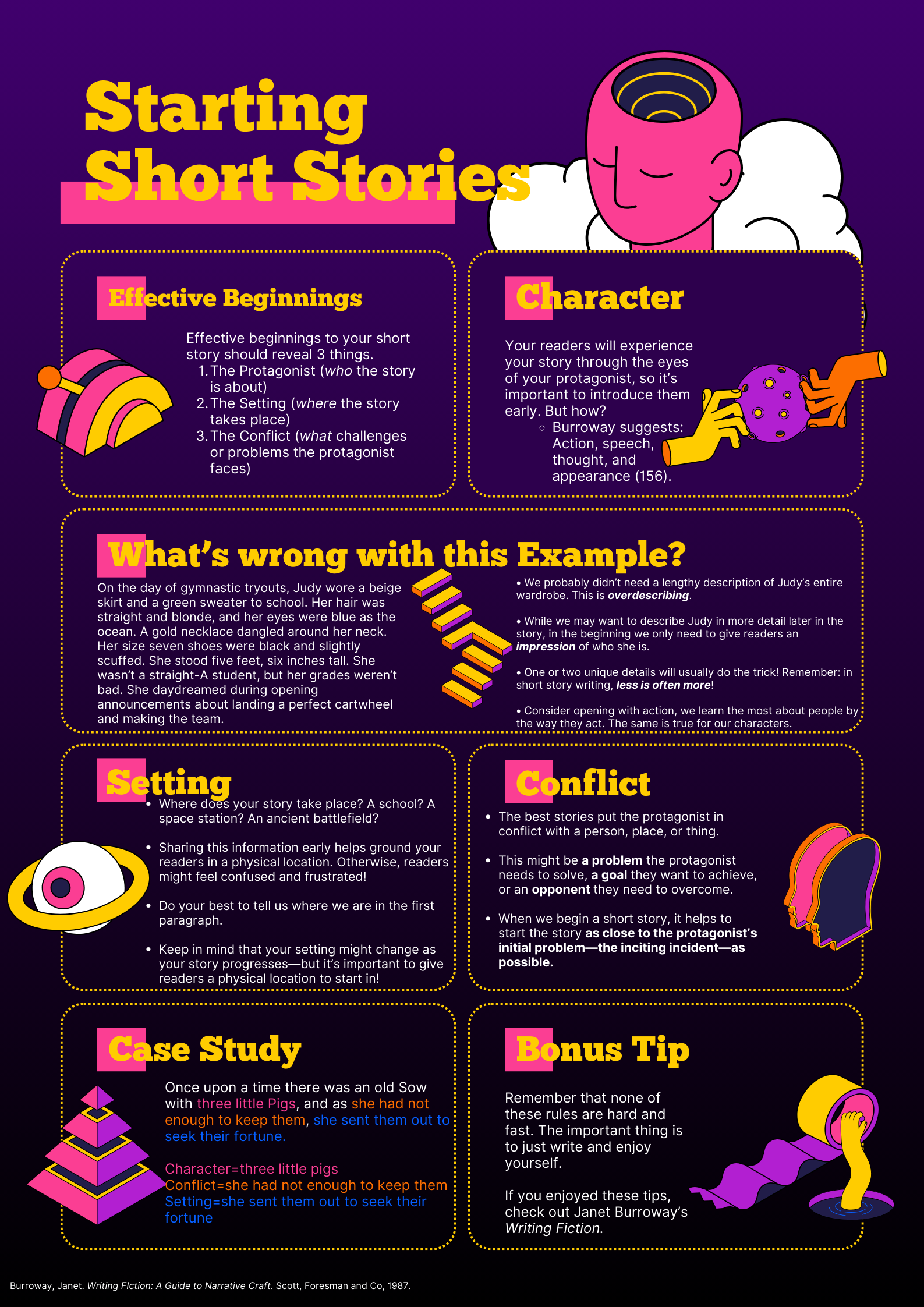Beginning a Short Story (Text Only)
Effective Beginnings
Effective beginnings to your short story should reveal 3 things.
- The Protagonist (who the story is about)
- The Setting (where the story takes place)
-
The Conflict (what challenges or problems the protagonist faces)
Character
Your readers will experience your story through the eyes of your protagonist, so it’s important to introduce them early. But how? Burroway suggests: Action, speech, thought, and appearance (156).
What's wrong with this example?
On the day of gymnastic tryouts, Judy wore a beige skirt and a green sweater to school. Her hair was straight and blonde, and her eyes were blue as the ocean. A gold necklace dangled around her neck. Her size seven shoes were black and slightly scuffed. She stood five feet, six inches tall. She wasn’t a straight-A student, but her grades weren’t bad. She daydreamed during opening announcements about landing a perfect cartwheel and making the team.
- We probably didn’t need a lengthy description of Judy’s entire wardrobe. This is overdescribing.
- While we may want to describe Judy in more detail later in the story, in the beginning we only need to give readers an impression of who she is.
- One or two unique details will usually do the trick! Remember: in short story writing, less is often more!
- Consider opening with action, we learn the most about people by the way they act. The same is true for our characters.
Setting
Where does your story take place? A school? A space station? An ancient battlefield? Sharing this information early helps ground your readers in a physical location. Otherwise, readers might feel confused and frustrated! Do your best to tell us where we are in the first paragraph. Keep in mind that your setting might change as your story progresses—but it’s important to give readers a physical location to start in!
Conflict
The best stories put the protagonist in conflict with a person, place, or thing. This might be a problem the protagonist needs to solve, a goal they want to achieve, or an opponent they need to overcome. When we begin a short story, it helps to start the story as close to the protagonist’s initial problem—the inciting incident—as possible.
Case Study
Once upon a time there was an old Sow with three little Pigs, and as she had not enough to keep them, she sent them out to seek their fortune.
- Character=three little pigs
- Conflict=she had not enough to keep them
- Setting=she sent them out to seek their fortune
Bonus Tip
Remember that none of these rules are hard and fast. The important thing is to just write and enjoy yourself. If you enjoyed these tips, check out Janet Burroway’s Writing Fiction.
Works Cited
Burroway, Janet. Writing Fiction: A Guide to Narrative Craft. Scott, Foresman and Co, 1987.
Resource created by: Blake J. and Carrel B.


